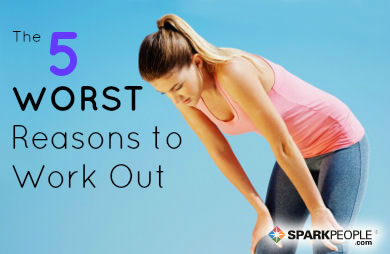Your days are short, busy and full. You don’t have the luxury of spending hours in the gym every day—and even if you did, there are plenty of other things you’d rather do with your time. That means you need to find ways to wring the maximum benefit out of every workout minute, with more efficient exercises that deliver double-duty results.
That’s when compound movements come in handy. Exercises fall into one of two categories: isolation or compound. As you might have guessed, isolation exercises focus on one specific muscle group, such as hamstring curls, bicep curls and calf raises. (In reality, there’s no such thing as a 100-percent isolated move, as there are always secondary muscles getting worked along the way—but isolation exercises focus primarily on one area.) On the other hand, compound movements evenly engage two or more joints, which works numerous muscle groups at the same time. So you spend the same amount of time on a move, but get just as much benefit as if you performed two separate exercises.
Try some of these trainer favorites, and spend less time in the gym while seeing more results.
Wide Grip Lat PulldownFrom Monica Lam-Feist, ACE-Certified Personal Trainer at AlgaeCal
The main muscle worked in this exercise is the latissimus dorsi (the largest back muscle), but it also works the biceps, shoulders and upper back as secondary muscles.
- Sit on the machine and adjust the knee pad so there’s no space in between your thighs and the pad.
- With your feet flat on the floor, push your chest up and out.
- Grab the bar with your hands in a wide grip.
- Inhale to prepare before your movement.
- Exhale as you begin to pull down through your elbows until you’re able to squeeze the lats at the bottom ( and when your shoulder blades come together).
- Slowly raise the bar back up into its starting position.
Leg Raise with FlyFrom certified fitness trainer Candice McField
This compound move works the upper and lower body simultaneously, strengthens the lower abdominals, strengthens the lower back and works the quads, chest and inner and outer thighs.
“I love this exercise because although it may not look very challenging, it truly is,” says McField. “After a few reps, your quads plus inner and outer thighs will feel the burn as you lift the exercise ball up and down. In addition, it is an incredible exercise to strengthen your core, particularly the lower abdominals which, often get ignored in workout routines. The icing on the cake is that it also works your chest and lower back.”
- Lie on your back, holding dumbbells out and away from your body at shoulder level.
- Place an exercise ball between your feet and extend your legs.
- Raise the dumbbells up over your chest and your legs straight up.
- Lower both dumbbells and your legs back down to the start position.
Barbell Front SquatFrom fitness trainer Rui Li
“There are few exercises that encourage the use of every muscle in the body, help to increase mobility, work to improve muscular imbalances and generate super strength, especially in the hips,” Li says. When performed properly, the barbell front squat works the quads, glutes, hip flexors and latissimus dorsi, but also utilizes other muscles that you may not realize are getting a ton of work, like the abdominals (especially the lower ones), calves, inner thighs and even neck flexors.
- Start by getting under the barbell in a rack, and assume the front rack position for your arms.
- Squat down just enough to rest the bar on your deltoids, and then stand up and back away one or two steps.
- Find a comfortable width for your squat stance and point your toes 20 to 30 degrees outward.
- Begin the movement by unhinging (or unlocking) the hips first, then push the knees out and start descending. Maintain "active" elbows the whole time, meaning as you descend deeper, you will need to be mindful of keeping your elbows up and arms parallel to the floor.
- Sink until you have gotten past 90 degrees. Continue to push your knees out and use your glutes to powerfully drive the resistance upward.
- Repeat for 8 to 12 reps, for 1 to 3 sets.
Li notes that you should avoid this lift if you don’t have strong hips (glutes and hip flexors) or if you’re unable to keep a straight back in a squat. Also, if shoulder mobility is limited, try creating an “X” with your arms by having the bar sit on your deltoids and your forearms go across each other while your hands lightly hold onto the bar. “The ultimate goal should always be to improve mobility to the point where a proper front rack position can be assumed and maintained,” says Li.
Squats on Leg Press MachineThis compound exercise works the legs (quads, hamstrings, calves) and butt (glutes).
- Follow the machine’s instructions for setup and select the desired weight.
- Position your body so that the feet are hip-width apart, with the toes pointing forward, knees above the ankles, back straight and supported by the pad, and abs engaged. Make sure your knees and hips are both bent at 90 degrees.
- Keeping your weight balanced in your heels, extend your knees to push your body away from the foot stand.
- Slowly bend the knees to return to the start position (a 90-degree bend at the knees) to complete one rep.
- Repeat for 8 to 12 reps, for 1 to 3 sets.
Note: To protect your joints, never bend deeper than 90 degrees at the knees or hips and don’t lock the knees when straightening legs. For variety, feet can be placed in different positions (hip-width, wider than hips, toes turned out, etc.), but make sure the knees stay above the ankles.
Lunge and Twist With Medicine BallThis compound move works the quads and glutes as well as the arms, shoulders and obliques.
- Stand with legs hip-distance apart, toes pointed forward, back straight and hands holding a medicine ball right in front of your chest, elbows bent.
- Take a big step forward, keeping upper body as straight as possible.
- Bend both knees, lowering your body and back knee toward the floor, while pressing the medicine ball forward in line with your shoulders (straightening but not locking the elbows). Holding the medicine ball in front of you and keeping the legs and knees stationary, twist from your waist toward the right.
- Twist back to center, facing forward.
- Straighten legs and pull medicine ball back in front of chest to return to starting position and complete one rep.
- Repeat for 8 to 12 reps, for 1 to 3 sets.
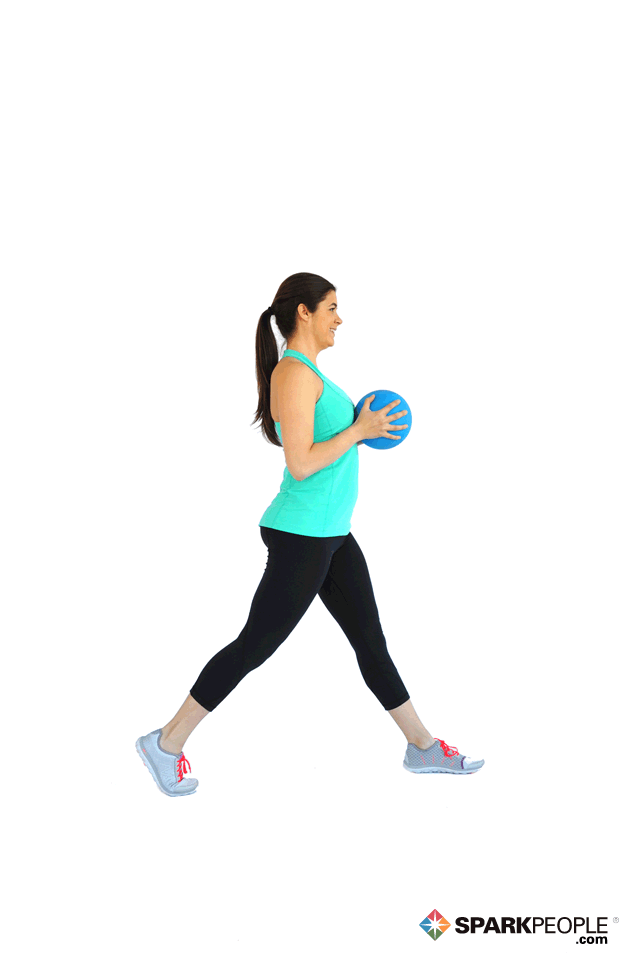 Trap Bar DeadliftFrom Holly Zielinski, fitness coach with Steiner Strength (pictured is strength coach Jason Tawiah)
The Trap Bar Deadlift is an excellent exercise for athletes, but also for common fitness enthusiasts. “Not only does this lift work major muscle groups, such as the quadriceps, hamstrings and gluteus, it also challenges your upper body and will help stabilize your shoulders,” says Zielinski.
- Stand with your feet hip-width apart. Grip the barbell with palms facing toward you.
- With the abdominals braced and tight, push your feet into the ground to stand erect with the bar.
- Lower the barbell down to the ground, pushing the hips back, keeping your chest up and keeping your gaze forward. Maintain a neutral spine while hinging, to avoid rounding the lower back.
- Return to a standing position.
- Repeat for 8 to 12 reps, for 1 to 3 sets.
From fitness trainer Cheryl Russo Russo says the Manmaker is the ultimate compound move, combining cardio with strength and hitting almost every muscle group.
- Starting from a standing position, hold a dumbbell in each hand, with your arms at your sides.
- Squat down, placing the dumbbells on either side of the feet on the floor, as you continue to hold on to them. This engages the muscles of the legs, quadriceps, glutes and hamstrings.
- Jump both feet back into a high plank position. This engages the legs, abdominals, back and shoulders.
- Keeping the core engaged, bend the elbows, lowering the torso toward the floor into the bottom of a pushup. This engages the muscles of the pectorals (chest), shoulders and triceps.
- Push away from the ground, lifting the torso to the top of a pushup as you pull one dumbbell up into the side of your body to do a one-arm row. This engages the chest, shoulders, the tricep of the arm staying on the ground and the bicep of the arm pulling the weight. It also engages the muscle of the back and the latissimus dorsi on the side where the dumbbell is being lifted.
- Lower the arm back and the torso into the bottom of a pushup again.
- Repeat the row with the opposite arm.
- Do another pushup as you raise back to the plank position, then jump both feet between the hands. This engages the muscles of the core, legs and shoulders and provides a cardio boost.
- Stand up while bending the arms up into a bicep curl and then press overhead for a shoulder press.
- Repeat for 8 to 12 reps, for 1 to 3 sets. See video.
From James Shapiro, certified trainer with Primal Power Fitness
Shapiro prefers the elevated-handle deadlift over the traditional deadlift, as it doesn’t put as much stress on the lower back, but still activates the hamstrings, quads, glutes, lats, core and posterior deltoid.
“I love this variation in comparison to the traditional deadlift movement because of how frequently I can do it,” he says. “One day I can go heavy, and on another day I can go lighter and work on explosiveness with box jumps.”
- Step inside the trapezoid-shaped bar and stand anywhere from inside to shoulder-width distance apart with your feet.
- While standing, brace your core and keep the arms straight and tensed. Your upper body should remain stiff, so your legs and hips do the work.
- Reach both arms down as if you are grabbing two suitcases (one on each side).
- Slightly sit back to push the chest forward and lift with the legs.
- Thrust the hips forward at the end of the motion while keeping the hands close to your sides at all times.
- Lean slightly forward and bend at the knees to bring the bar back down and repeat.
- Repeat for 8 to 12 reps, for 1 to 3 sets. See video.
From fitness trainer Cheryl Russo
Standing with the weight on one leg, hold dumbbells in each hand, with a flat back, hinge forward from the waist so that the torso is parallel to the floor. This works on the balance and engages the core muscles and hamstrings.
- Pull both dumbbells into the side, engaging the biceps, rear deltoids, latissimus dorsi and rhomboids. While lifting the back leg up to hip level, engage the hamstrings and glutes.
- Lower the arms by straightening them and lower the leg. Do eight to 15 repetitions and repeat with the other leg.
- If you hold the palms facing the body for the first set and then hold the palms facing up, pulling in towards the waist for the second set, you will hit the back muscles at different angles. The second set will hit more of the lower lumbar. See video.
Snatch Grip DeadliftFrom Alex Robles with White Coat Trainer
“The deadlift is already one of the best compound exercises of all time, and adding a snatch grip intensifies the exercise even further,” says Robles. “I love this exercise because it truly activates numerous muscles all at once. After you finish a set, almost every muscle in your body is fatigued.”
The Snatch Grip Deadlift strengthens all of the muscles in the posterior chain, including the lower back, the glutes and the hamstrings. It also works the abdominals, hamstrings, upper back and forearms. The wide grip activates the muscles of the upper back more than a traditional deadlift, making it a great exercise for both upper and lower body development.
- Approach a barbell on the floor that is loaded to the desired weight.
- Set your feet at approximately shoulder width. Bend down and grab the barbell with as wide a grip as you can manage.
- Bend your knees and keep your back in a flat, neutral position. Keep your shins as vertical as possible, and keep them in contact with the barbell. You should feel a stretch along your hamstring muscles if you are doing this correctly.
- Take a breath, brace your core and begin the exercise by lifting the barbell straight up. Keep your back flat at all times, and keep the barbell in close contact with your body. Once the bar passes your knees, thrust your hips forward and squeeze your glutes.
- Reverse the movement the same way you came back up.
- Repeat for 8 to 12 reps for 1 to 3 sets.
|
|
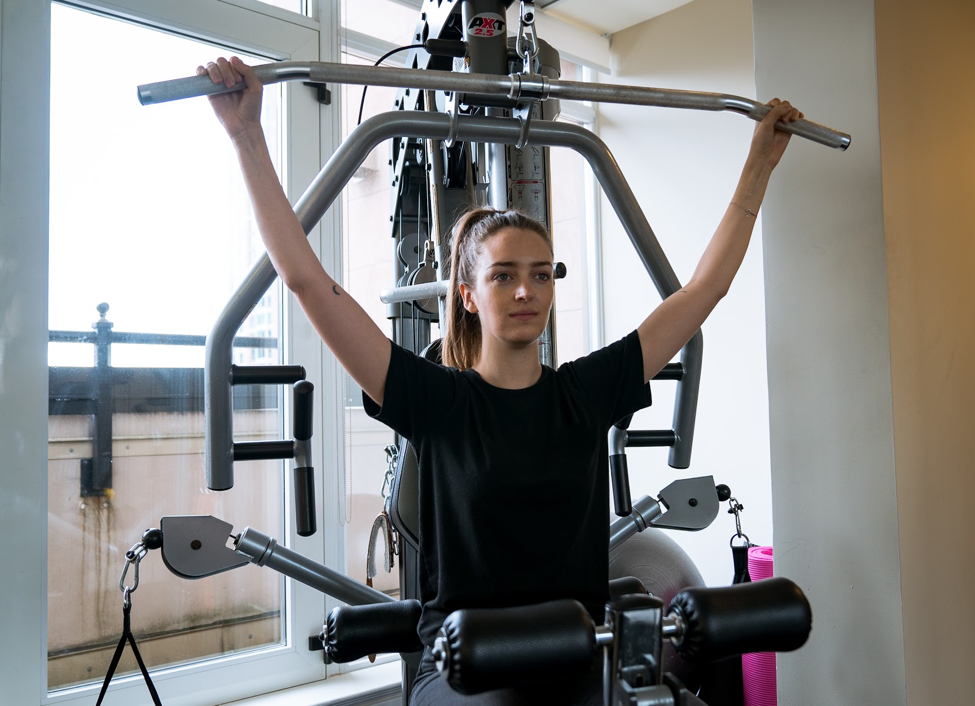
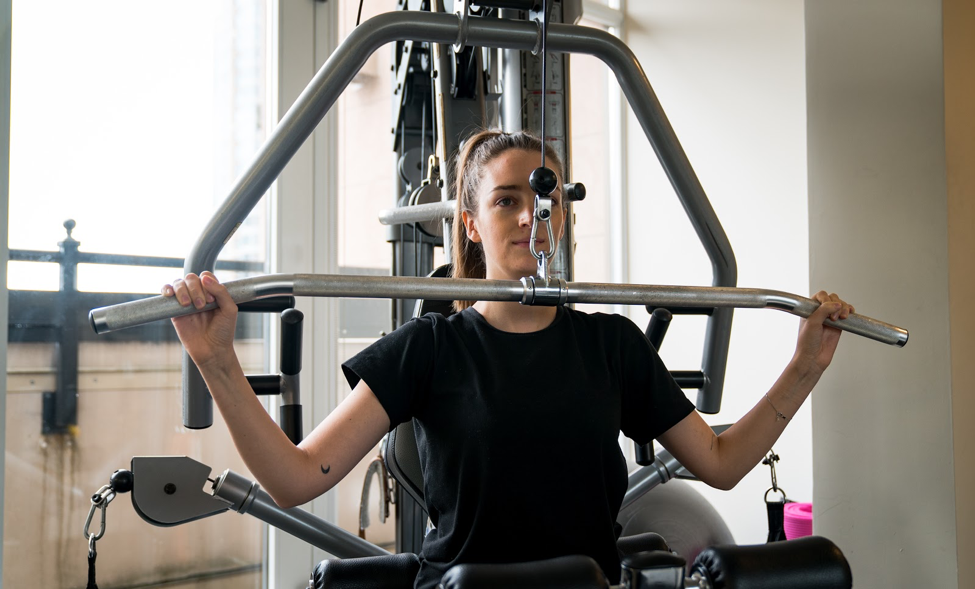

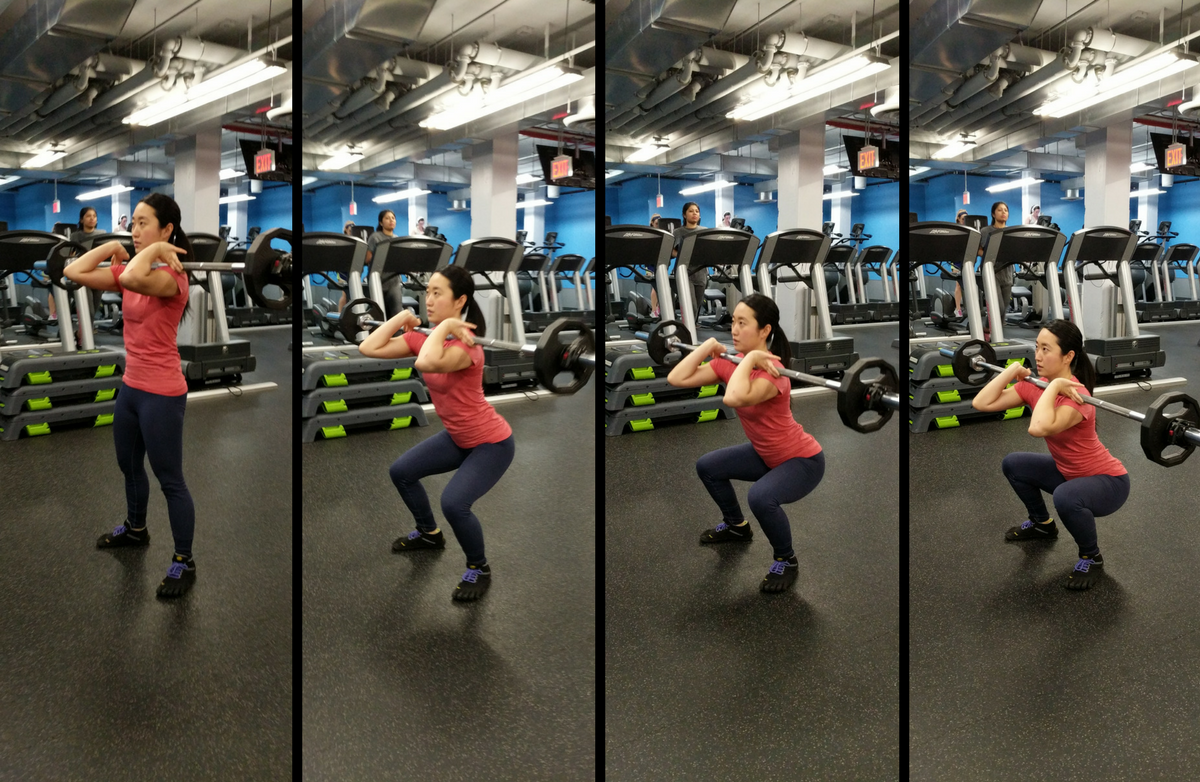
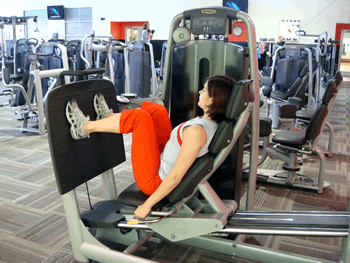



.png)






.jpg)



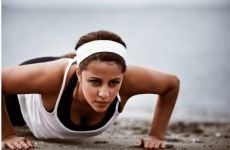






.jpg)

